We review walking poles for trekking rough terrain, from Black Diamond, Leki, Craghopper and Alpkit
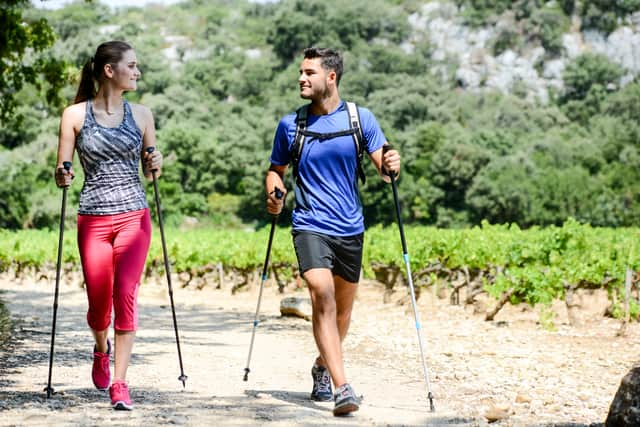

This article contains affiliate links. We may earn a small commission on items purchased through this article, but that does not affect our editorial judgement.
Why should you use walking poles?
While hiking is a fantastic way to get fit, find peace of mind, and see the great outdoors, it can be tough on the knees, hips and ankle joints - particularly as we age.
A great pair of hiking or trekking poles will work to support your joints, minimising the risk of trips, slips and falls and generally increasing and improving stability and confidence when out on longer hikes.
If you’re on a backpacking trip, poles are a great means of keeping your weight distributed and easing you over rocky ground.
They’re also great for maximising the physical benefits of hiking. You may be familiar with ‘Nordic walking’ - it began life as a means of cross-country training for skiers in the summer month, but essentially it is walking with the aid of walking poles strapped to the wrist.
The best thing about this method of walking is that it engages the full body - by walking with walking poles, you engage 90% of your body’s major muscles, rather than the 45% utilised during regular walking. As a result, you burn around 20% more energy as you walk, despite the walking itself feeling easier on the body.
While Nordic walking purists will point out that there are dedicated ‘Nordic walking poles’, in essence, standard walking poles perform the same function in terms of turning walking into a full body work-out.
Best trekking poles at a glance:
- Best for pole grip comfort: Leki Carbonlite, £95.96
- Best for durability: Columbia 6160 Aluminium Trekking Poles, £55
- Best lightweight option: Komperdell Carbon C3 Pro Compact, £107
- Best for four-season adventures: Black Diamond Alpine Carbon Z Trek Poles, £135
- Best for smaller frames: Leki Khumbu Lite Trekking Poles, £67
- Best budget option: Regatta Ultralite Trekking Pole Set, £21.49
- Best for everyday use: Craghoppers Treklite Carbon Trekking Poles, £69.49
How to walk with walking poles
Initially, it may feel a little unusual walking with hiking poles. You should ease yourself into using them, as you would break in a pair of shoes, to allow your body to get use to the movement and your gait to adjust to the poles.
Because it is full-body exercise, poles may leave your upper body more tired - it’s worth building up your mileage to allow your body to familiarise itself with this new method of walking.
Stay as relaxed as possible, while still paying attention to your posture. Plant the pole ahead of your step, then follow with your feet and body. Then, swing the pole forward again. It becomes natural after short practice!
Don’t make your stride too great - neat, normal steps will be more comfortable as you walk with poles.
What to look for in a trekking pole
There are a couple of main defining factors of a good pole - build and material -and therefore weight - and height and ease of extension.
Make sure you try a few poles to get the right fit for you - the general rule is that if you’re over 6ft in height, get a maximum length of around 50in or more.
Your elbow and arm should be at a 90 degree angle when hiking so the length of your arm to the ground is the extension you need.
If you’re going to be putting poles in a backpack or carrying them over long distances too, you’ll want to make sure they are as light as possible.
Look for lightweight aluminium poles or carbon-fibre offerings which are not only light but offer maximum strength too - most of our suggestions here should cover that criteria.
Cheaper poles are fine for day-trippers and occasional hikers, but if you’re serious about your walking, a pair of lightweight, ideally carbon fibre poles that are easy to adjust are worth forking out a little more for.
Read more of our coverage of the best hiking gear around:
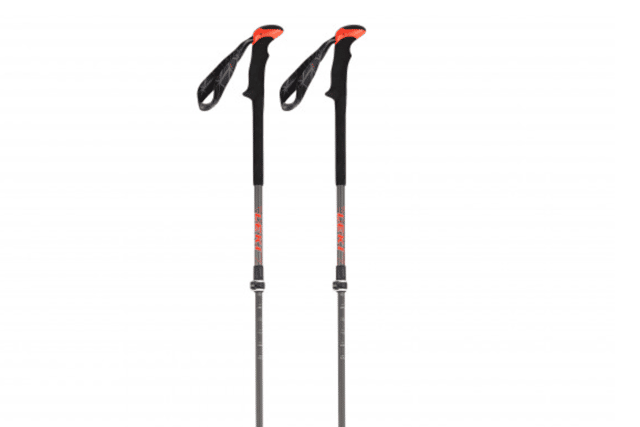

Using a traditional telescopic design, the Carbonlite poles are an excellent offering from Leki that we’d enjoy using over long distances, due to the lack of weight and the comfortable grip.
They use a twist lock mechanism, which worked well, although perhaps didn’t feel quite as secure as the more conventional lever-lock mechanisms found on many other poles.
We enjoyed the carbide pole tips, which although fairly standard across a range of high-performance trekking poles, increase stability and durability when faced with hard rock or ice surfaces.
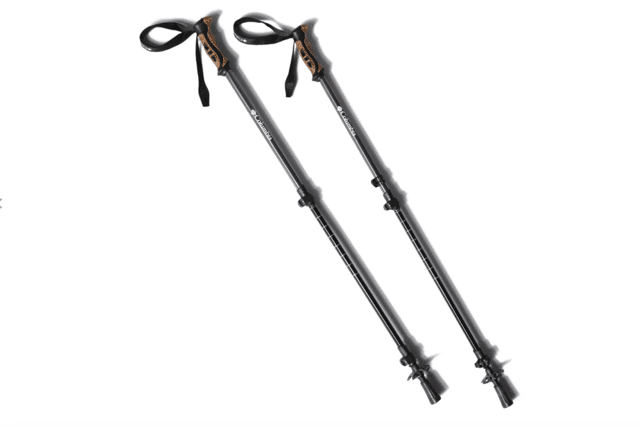

A good everyday option made from an aircraft-grade aluminium construction, the three section design of this pole collapses to 25” for storage and extends up to 54”, so it’d be a good product for the taller among us, too.
Although it’s slightly heavier than some of the options, they feel very comfortable to use, with a cork-based compound providing excellent cushioning and a secure, slip-free grip.
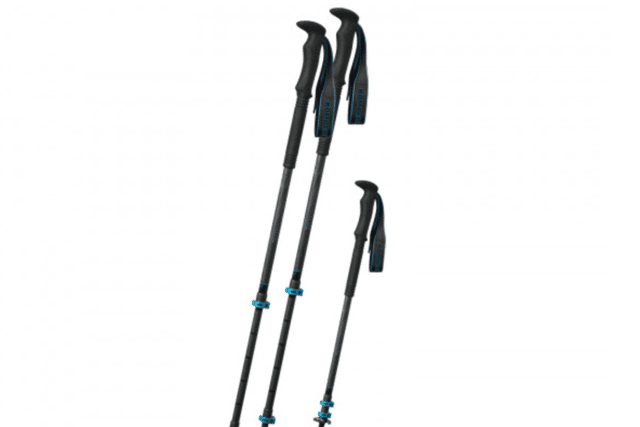

These are some of the lightest trekking poles we’ve encountered, as well as being the most compact option on the list when it comes to packing down and folding away for storage.
For this reason, we’d recommend these poles for more frequent travellers, or for multi-day adventures where space is at a premium and you need to make savings where possible.
They sit in the middle of the range when it comes to durability, but the lack of weight alone is enough to recommend them for most uses.
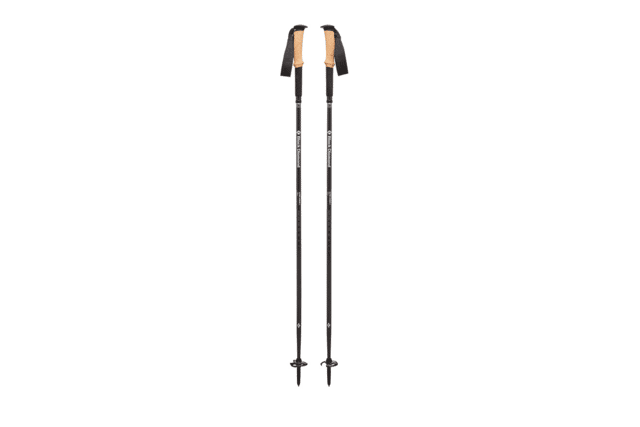

These are amongst Black Diamond’s most durable poles on offer, a provide a good option if you’re looking for some serious adventuring kit.
They’re marketed towards those looking for ‘mountain mission’ equipment, as you’d expect from a company who are all about climbing and skiing, and although they’re expensive they present a great option for people who can’t afford their poles to let them down. They’re fabulous shock absorbers.
Their durability and stiffness also means they’re suitable for a range of outdoor sports, from hiking and trail running to climbing and long-distance trekking.
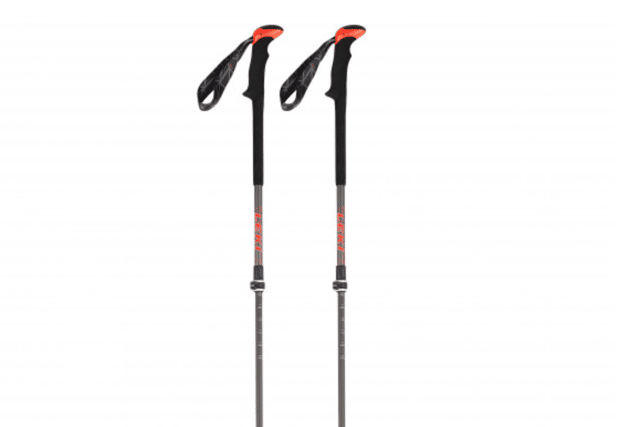

Named after a region on the Nepalese side of Mount Everest, these trekking poles offer an alternative for smaller or shorter frames when out and about.
They are a smaller diameter and height, and are recommended for use for people who weigh 75 kg or less.
The speed locks work well so they can be quickly adjusted on the fly, and we also liked the cork grip handles which are ergonomically designed and comfortable - providing excellent grip, especially when wearing gloves.
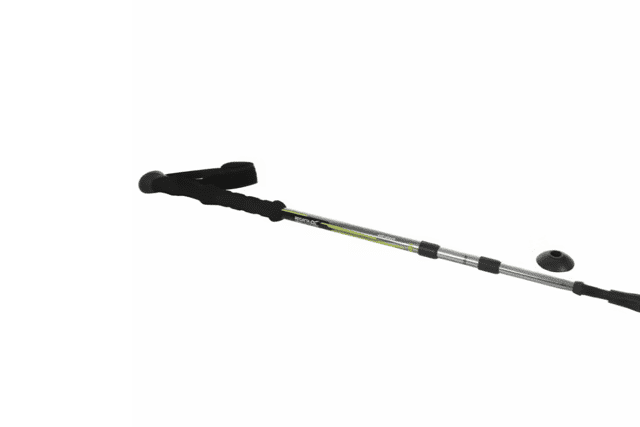

We don’t all need to spend lots of money on trekking poles, especially when the majority of us will be using them around the hills of Britain.
Although they don’t have the strength, adjustability or versatility of some of the other poles on this list, these options from Regatta are the perfect budget buy - simple, comfortable, adjustable and easy to use and get the right height.
As a basic intro to the trekking pole world, this will add support, comfort and confidence-inspiring safety to your everyday hikes or dog walks.
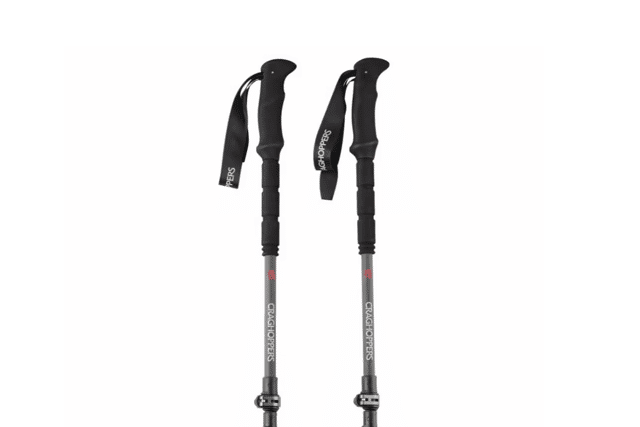

Craghoppers make a good array of mid-range outdoor kit for regular use, and these Treklite Carbon poles are at the top of this particular range but remain at a very palatable price point.
They have an extended non-slip EVA foam grip, an ultra-light adjustable strap and feature a 3-section telescopic range with a decent aluminium fast-locking system.
These are good, feature-packed poles that take Craghoppers into the realm of technical kit for regular use.
